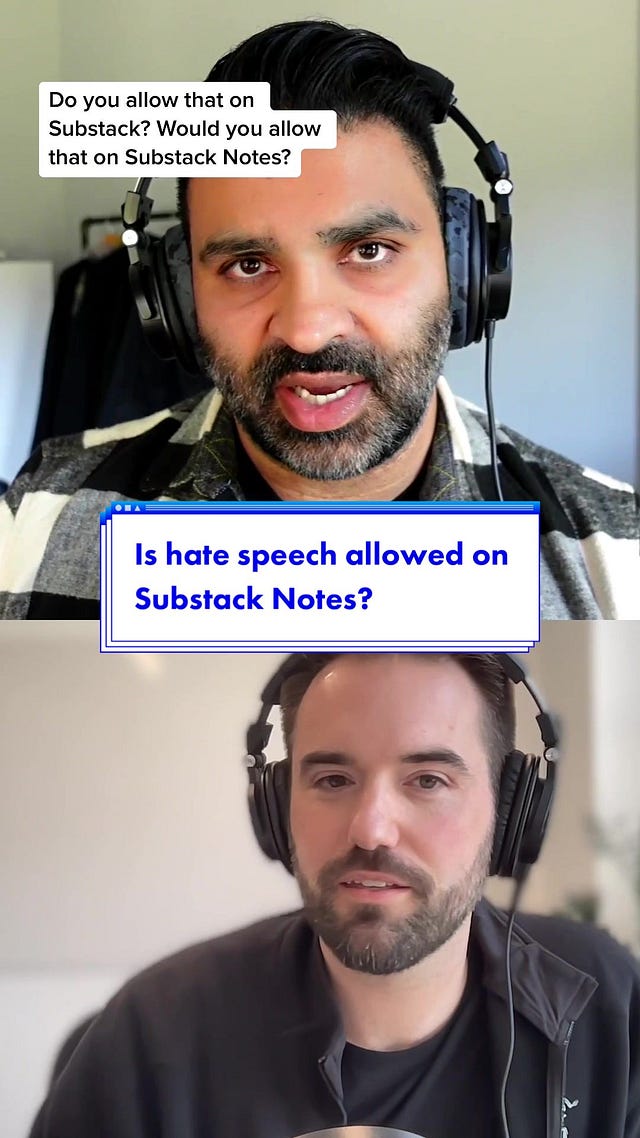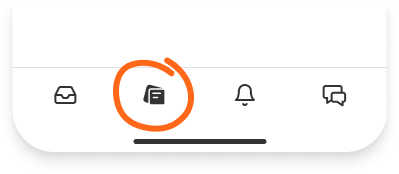Will Substack Notes add to the existing social media chaos?
Substack is navigating tricky terrain with Notes, a social-media feature that would require it to address concerns about content moderation and algorithm management.
Hey there! I just published my first note on Substack Notes, a new feature that's been rocking Twitter’s boat lately. Some are even calling it a Twitter replacement, but Substack insists that's not the case.
Similar to Twitter, Notes allow users to share links, short posts, quotes, photos, and more (and it has an edit button!), but minus the trolling from the CEO. Another key difference is in what you won’t see on your feed: ads. (The network runs on paid subscriptions to its newsletters.) For anyone hesitant to dive into Substack and start a newsletter or blog, Notes provides a gentle introduction to the platform.
It is too early to tell if this can completely replace Twitter—the platform needs to attract a critical mass audience. And I’ve learned enough to know that a digital town square under a large corporation or a bad actor is vulnerable to manipulation—and Substack, which has its recommender system (now more pronounced with Notes1), won’t be immune to that. When I wrote an article on digital detox, I suggested that for news, it’s best to directly check media organizations’ websites instead of their social media accounts. My reasons were to:
Avoid the dopamine rush of doomscrolling;
Read the entire context versus the soundbites, which are designed for clickbait;
Remove the collective moral outrage over viral news items; I prefer to think for myself; and
Discern the banner stories; most of what’s trending online doesn’t warrant hijacking the national conversation or my attention
I wrote this before Elon Musk took over Twitter. Since then, there’s been even more incentive to quit it. Last week,
mulled over why journalists remain on the platform despite the indignities they continue to suffer at Musk’s hands.The other day, (Twitter’s) old press email address started responding to reporters’ queries with an automated 💩 emoji. Musk tweeted about it, and reporters soon gleefully confirmed it with screenshots of their own. The company was symbolically shitting all over them, and journalists couldn’t get enough of it.
A few days later, on April 12, NPR quit Twitter after being branded a “state-affiliated media.” The following day, PBS also exited the app for the same reason. This designation is similar to those given to official media outlets of countries like China and Russia, a wildly inaccurate comparison.
It’s interesting if global media household names will follow suit. BBC got labeled similarly, although it now says, “publicly funded media.” The New York Times, meanwhile, lost its verified checkmark status after Musk singled it out as a “propaganda” tool, among other insults. What would it take? As Twitter’s policies continue to shift—on April 20, it will remove all legacy checkmarks, further upending the algorithm and tearing down the guardrails—it’s more crucial for an alternative platform to emerge.
This is why for a platform trying to provide a different model from Twitter, it was baffling to see the Substack CEO stumble when asked about racist content.
For anyone just getting introduced to Notes and Substack, this excerpt was... cringe. (But for the full context, read: Is Substack Notes a ‘Twitter clone’? We asked CEO Chris Best.)
Gizmodo sums up the point of contention nicely:
As the Verge’s Patel pointed out, Substack’s newsletter product is more of a service provider like Gmail or even a phone company, the kind of service where the general American consensus favors free expression over company interference. Most people don’t want Google deciding what you can and can’t say in an email, with few exceptions. But with Substack Notes, the company is dealing with a social media product where anyone can make a post that other people will see. That’s a lot different from a newsletter people have specifically asked to read.
It highlights why Substack is navigating tricky terrain with Notes. That might be why they're hesitant to accept the Twitter comparison since it would require them to address concerns about content moderation and algorithm management. Nonetheless, it's an interesting development and one that could make a big difference in the social media landscape.
How to try Notes
If you don’t want to dwell on the negatives and you’re simply curious about Substack Notes, you can try it out for yourself. Just head to substack.com/notes or look for the "Notes" tab in the Substack app. As a subscriber to my newsletter, you'll automatically see me in your feed.
And if you decide to share your own Notes, drop me a comment and I'll be happy to follow you. For more info, see the FAQ. Thanks for reading and happy Note-taking!
Substack's newsletter component uses an algorithm and writer endorsements to suggest other publications to subscribers, but it's not as overt as Notes' home feed.









